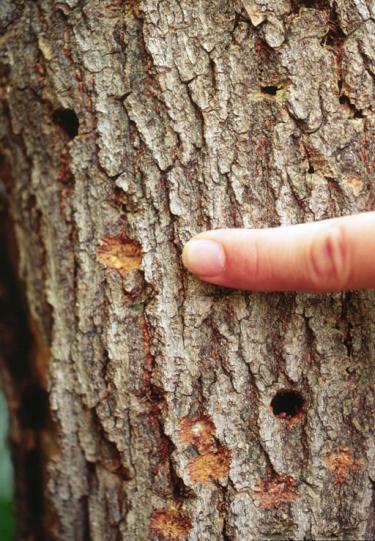When Asian Longhorned Beetles Attack
The Asian Longhorned Beetle is shiny black with white spots. It's about an inch long, not counting its graceful black-and-white-striped antenna, which are longer than its body. They look very similar to the native whitespotted pine sawyer beetle. To tell them apart, look for blue feet on the Asian Longhorned Beetle and a distinctive white dot at the wing juncture just behind the head of the whitespotted sawyer.
What Does It Do to my Trees?
Female Asian Longhorned Beetles dig shallow pits in the bark of host trees, laying a single egg in each one. After the eggs hatch, the larvae burrow into the trees and overwinter there. They burrow deep into the heartwood of the branches and main stem, weakening the tree to the point where branches break off after a few years of repeated attacks. The next spring, the larvae build a pupa. In summer, the adults emerge to start the cycle over.
Look out for these signs of infestation:
- Pits. The adult female digs shallow pits in tree bark to lay her eggs. These pits darken as the tree heals.
- Exit holes. When it leaves the tree in the summer, each adult chews a perfectly round hole, about the diameter of a pencil . Sap may drip from these holes.
- Frass. Sawdust-like material, produced by larvae as they chomp through the wood, settles on the branches and on the ground.
If the signs point to an Asian Longhorned Beetle infestation, you can control the damage and help stop this destructive pest from destroying America's forests.
How can I get more tips?
It’s simple! Enter your email below.

